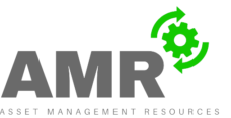The Importance of Stocktaking
This article on our blog briefly covers the importance of stocktaking for your organisation as well as outlines the types of stocktaking.
"Stocks" VS "Inventory"
The words "stocks" and "inventory" are often used interchangeably. However, there are slight differences between the terms. Stocks refer to finished products sold by a business to generate revenue. In cases where component materials are sold, these are also counted as stocks. For example, a bread producer's stock includes baked bread and can also include "branded" bread ingredients (e.g. flour, fillings, etc.).

Stocktaking Techniques
Stocktaking can be classified according to time intervals. They can be conducted on a continuous basis multiple times a year at a specific time interval (monthly, quarterly, semi-annually). Organisations may also conduct annual stock takes, which is completed once a year. In the case of stocktakes, the location may be closed for an allotted period of time and the movement of stocks suspended. Stocktakes maybe completed with different types of tools depending on the openness to the acceptance of such tools and budgetary constraints. Traditional pen-and-paper methods may be used, in which recorded stock information is inputed onto documents (e.g. stock sheets, BIN cards). Alternatively, stock data may be captured optically using scanners (e.g. barcode scanners).
How does my organisation benefit?
Stocktaking provides accuracy as it helps to detect discrepancies between recorded stock take results and quantities recorded in the inventory system. Discrepancies are dealt with accordingly based on organisational policy. Results also show how effective are currently used inventory controls and may reveal potential areas of improvement. Stocktakes also reveal products that have run out (stockouts), obsolete products (dead stock) and excess products (overstocking). Fast and slow-moving stocks can be identified by comparing stock take data over a time horizon.
